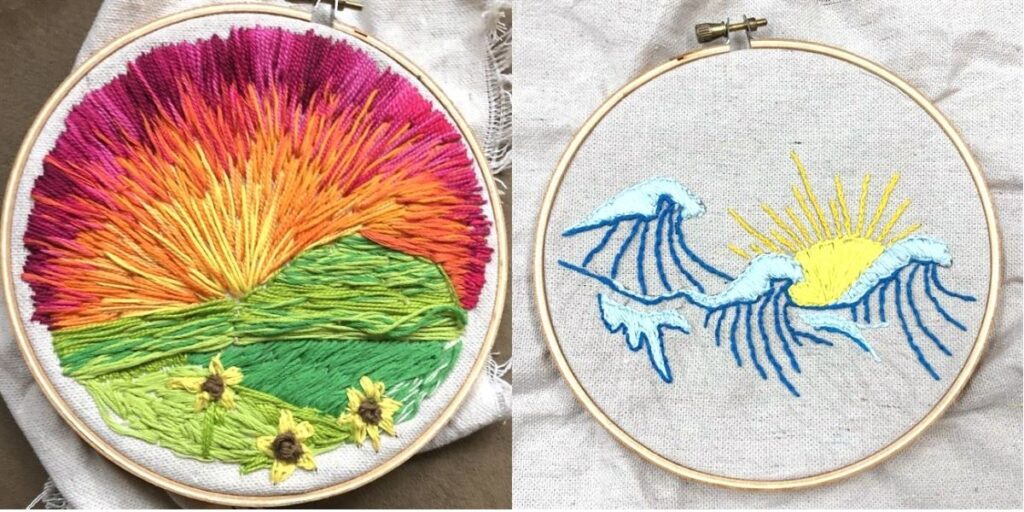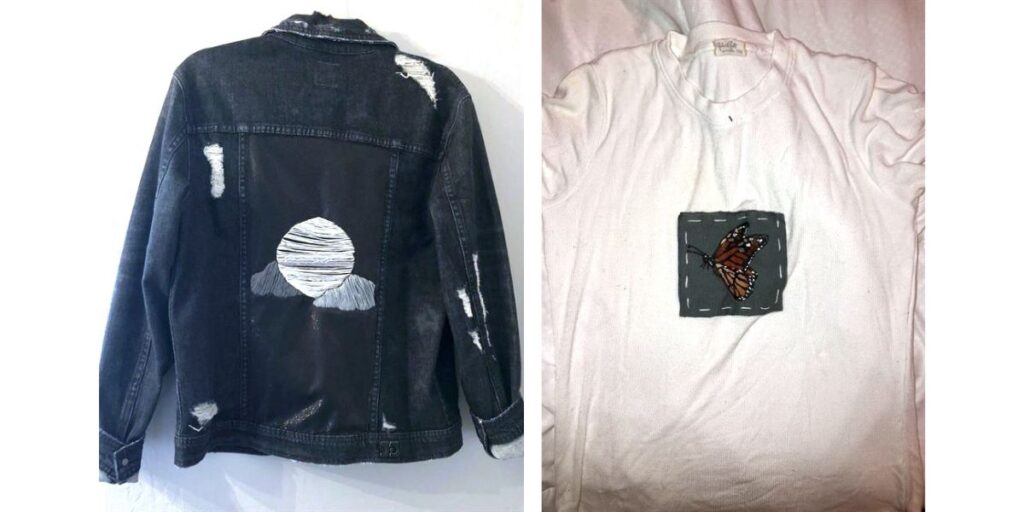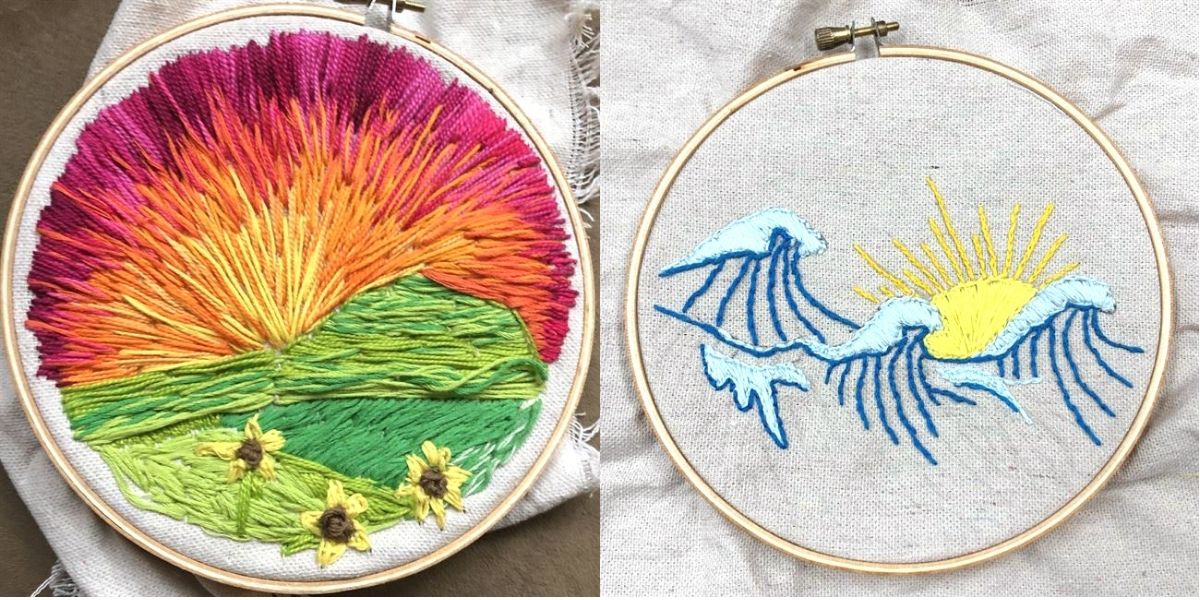A classic struggle in the history of art is the differentiation between art and craft. When we tell people that we teach art, a common response may be, “Oh, how fun! You get to make crafts all day!” To many of our students, families, and colleagues, art and craft are synonymous.
On the other hand, the art world tends to treat art and craft as two separate entities. “Fine art” tends to be put on a pedestal, displayed on the walls of museums, with placards detailing the artist’s life. Craft and functional work, however, are usually put by the wayside. The makers remain anonymous and uncelebrated. There are many theories about why this schism exists. One reason is that, while skill is required to complete crafts, they were traditionally done by women and lower classes as ways to provide for their families. As a result, the work is devalued. In Western art, we uphold the idea of “art for art’s sake” and overlook the functional.
For example, the esteemed California College of the Arts changed its name from the California College of Arts and Crafts in 2003. This name change signaled to many craftists that the rift was only going to grow. However, artists have begun to reclaim these crafts into their creative practices. They have found beauty in creating functional pieces or in using techniques that are traditionally considered functional. There has been a surge in craftivism, from the AIDS Memorial Quilt to the Social Justice Sewing Academy to yarn-bombing. For many, fibers are a nod to familiarity. Artists using fibers to amplify their voices is extremely powerful.
Teaching students of all ages how to work with their hands develops fine motor skills and provides greater satisfaction to young artists. Bringing techniques that are traditionally considered “craft” into your lessons is a fantastic way to do this. Use fibers to prod students from their comfort zones and promote high levels of engagement with a new, very tactile medium.

Read on for four ways to bring fibers into your fine arts classes.
If you do not have experience with fibers, it can be intimating! There are new techniques, materials, and vocabulary terms to learn. If you want a deeper immersion into the world of fibers, be sure to check out our online Studio: Fibers course and the next NOW Conference. We also have provided several resources linked throughout the remainder of the article for you.
1. Weaving
Weaving is a fabulous way to teach students about the physical makeup of fabric. As they learn about warp, weft, and textures, you will see them become more invested and excited about making their own fabrics. Weaving is an effective introduction to fibers at any age or skill level. If it is the first time your students are weaving, check out this informative article about weaving with young artists. The advice given is useful for new weavers of any age. If you are looking for quality weaving resources, check out the Wonders of Weaving Collection in FLEX Curriculum and the Basic Weaving Techniques Pack in PRO Learning.
Check out these three weavers to show your students:

Bring this lesson idea into your classroom:
Study the artist We’wha, a Zuni artist from the mid to late 1800s. There are many anglicized spellings of their name, so you may find a few other versions. They blended pottery and weaving together in both traditional and innovative ways. Want a fun intro to We’wha? Check out this interactive Google Doodle that celebrates them! Demonstrate how to warp a loom and do some weaving techniques. Challenge students to create a piece that incorporates weaving and at least one other medium.
Here are some other artists who also use yarn:

2. Felting
Felting is a different way to make fabric. Compared to weaving, it is less structured. By agitating wool roving, artists create their own fabrics. These hand-made fabrics can be created in many sizes, shapes, and even volumes. Felting is an effective way to bring a sculptural element to your fibers curriculum. If you are looking for resources on bringing felting into your classroom, check out the Discovering Felting Collection in FLEX Curriculum, the Needle Felting Basics Pack in PRO Learning, and these two episodes (1, 2) of Everyday Art Room.
Check out these three felters to show your students:
Bring this lesson idea into your classroom:
Examine the artist Paolo Puck and how he creates his original and fantastic creatures. Team up with a science teacher and challenge students to create a new species for a specific environment or planet they recently learned about. Guide students through wet felting to build up the bulk of the body and needle felting to add details. Have students justify why their creature will thrive in their environment. You can even make this a competition!

3. Quilting
Quilting is the “fibers approach” to collage. Quilters take something created by somebody else and reinterpret it as their own. They pull from found imagery, patterns, and color. Even though quilting has a long and storied history, there is also a vibrant contemporary community of quilters. For sewing skills necessary to begin quilting in the classroom, check out these two PRO Packs: Bringing Hand Sewing into the Art Room and Sewing Basics in the Art Room.
Check out these three quilters to show your students:
Bring this lesson idea into your classroom:
Investigate the artist Billie Zangewa. Focus on how she uses both found imagery and color to create an image and narrative. Students write a story about a specific time they felt warmth and love from another person. Ask them to identify a specific scene from that interaction and reflect on what colors remind them of that moment. Students sew a basic quilt block for the background. They then gather smaller pieces of fabric to build a mosaic depicting their scene. These smaller pieces can be attached to their block using fabric glue. Display the quilt blocks together as a class installation.

Do you need fabric swatches and scraps?
Ask the community to donate gently used clothing and unused fabric scraps. Also, hit up local fabric stores. Ask about last season’s fabric samples and share your project ideas with them. Many stores—especially smaller, local stores—will be happy to donate outdated samples to your program.
4. Sewing and Embroidery
Sewing and embroidery are skills that are helpful to know throughout a student’s lifetime. Whether it’s patching a hole in their jeans, reinforcing the elbows on their favorite flannel, or fixing a lost button, sewing is a vital skill. Sewing and embroidery can be sculptural or flat, decorative or functional. Embroidery is one of the easiest fiber mediums to incorporate into multimedia projects. Embellishing photographs and paintings on canvas with embroidery are both techniques stretching back to the Arts and Crafts Movement. Take a look at the Hand Sewing Techniques Lesson in FLEX Curriculum.

Check out these three sewists to show your students:
Bring this lesson idea into your classroom:
Explore the artist Jordan Nassar. Encourage students to pay particular attention to his use and development of patterns that touch back to his heritage and childhood. Brainstorm with students symbols and patterns from their childhood or heritage. A student with Scottish heritage may know their family tartan, or a student with Ghanan heritage may have a piece of kente cloth at home. Students may also create patterns from specific memories. Maybe a student’s favorite memory is jumping into piles of sycamore leaves. Their pattern could be sycamore leaf shapes in fall colors. Students translate their brainstormed pattern into a cross-stitch pattern. Students embroider their pattern onto a medium piece of canvas. Once the pattern has been stitched, students use it as the face of a hand-sewn canvas pillow.

Fiber arts have traditionally been more functional and generalized as “women’s work” in the United States. The medium of fibers can require a specific skill set and selection of materials that may seem intimidating and complicated. Despite holding a degree in art, I personally didn’t work with fibers until I was in my master’s program at AOEU and took the Studio: Fibers course. Because of the history and stigma, it is very common for many art teachers to have shied away from including it in their art curriculum. As a result, many students may not have had exposure to fiber arts in their K–12 education. But this is something we can change! Start integrating fiber arts into your curriculum this year. Your students will be blown away by its versatility and amazed at what magical things they can make with just some yarn and scrap fabric.
Are you looking for more resources on fibers? We have you covered:
- 10 Fantastic Fiber Artists Your Students Will Love
- 33 Fiber Art Ideas for Your Classroom
- Studio: Fibers graduate course
How do you already bring fibers into your classroom?
Who are two artists you are excited to bring to your students?
How will you begin to incorporate fibers into your multimedia projects?
Magazine articles and podcasts are opinions of professional education contributors and do not necessarily represent the position of the Art of Education University (AOEU) or its academic offerings. Contributors use terms in the way they are most often talked about in the scope of their educational experiences.





